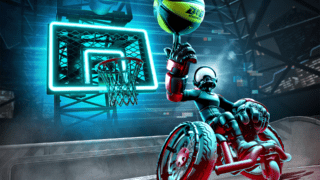Hands-On: OlliOlli World could be the cure to your daily grind
Roll7’s sequel is expertly skating the line between fun and frustrating

When it first arrived on the PlayStation Vita eight years ago, the original OlliOlli was a pleasantly surprising demonstration that less is more.
While at first glance it appeared no different to any of the endless runners that were rife on mobile at the time, in reality OlliOlli was a compelling skateboarding title that was engaging and infuriating in equal measure.
Both OlliOlli and its sequel were well received, but the series has been in hibernation for more than half a decade (a 2019 Switch port aside). That changes on February 8 when OlliOlli World arrives on PlayStation, Xbox, Switch and PC.
The most immediately apparent difference in OlliOlli World is the game’s new art style. Whereas its predecessors sported a more retro, pixel art look, World has a beautiful new cartoon-like appearance with characters and backgrounds reminiscent of the likes of Adventure Time and Steven Universe.
The game is set in Radlandia, an idyllic world created by the Skate Gods. Chiffon is a skater who has the ability to talk to the Skate Gods, and she’s looking for a successor to take over, and that’s where the player’s character comes in. It’s up to them to make their way through each of Radlandia’s five districts as they attempt to reach Gnarvana.
Although the game looks significantly more impressive than the previous OlliOlli games, the general mechanics remain the same. Players still use a button to push the board and gain speed, while the left stick is still used for jumps, tricks and grinds.
By holding the left stick in a certain direction then releasing it, your character pulls off different stunts. These can be made more complex by performing quarter circles, half circles and ¾ circles, while using the triggers rotates the board too.
Timing is also crucial, as players have to hit a button just as they touch the floor to ensure a perfect landing. This ensures, you don’t lose speed and that you get the maximum points from your tricks.
In this sense, then, fans of the series should be able to take to OlliOlli World like a duck to water (albeit a duck with a skateboard strapped to its feet). That’s not to say the game doesn’t introduce any new mechanics, however.
The switch from straight 2D visuals to a 2.5D view – with characters and environments now fully polygonal – means the game can pull off more interesting tricks. Many of the stages in the previous games had multiple high and low routes (similar to the 16-bit Sonic the Hedgehog games) meaning players could experiment to see which provided the highest scoring runs.
“Fans of the series should be able to take to OlliOlli World like a duck to water (albeit a duck with a skateboard strapped to its feet).”
This time, as well as retaining this, World also adds multiple lanes to proceedings. Because the game now has depth, there are moments where you can hit a button to slip sideways into a different lane which then splits off to a completely different section of the course. This increases the replay factor further because now many of the stages have distinct routes to explore.
This increase in variety also has a clear impact on the game’s trademark task system. As in the previous entries, simply reaching the finish line in each stage is enough to progress through the game, but each stage also has a series of tasks which provide rewards when cleared (usually equipment or clothing in this case).
Because many of these tasks focus on specific objects or set-pieces on a stage – perform trick X over obstacle Y, collect all of a certain object and so on – this means you may have to take on stages numerous times to make sure you hit every route and find every secondary objective.
Naturally, these tasks are often significantly harder than merely reaching the end of the level: it’s when you take these on that you’re most likely to be launching your controller across the room (in the best possible way, of course), and in that respect OlliOlli World is very much cut from the same cloth as its ancestry.
The 2.5D viewpoint also makes each stage far more interesting to both explore and admire. The first two OlliOlli games had a firmly locked camera because of their 2D parallax backgrounds but this time the camera is free to swoop around the fully 3D landscapes, in much the same way as Ubisoft’s Trials games.
This added depth also lets the game switch things up a bit with the occasional quarter pipe, which makes you perform a vertical jump then land on a different lane which is headed back in the opposite direction. Stages are no longer always simple left-to-right situations, which is hardly ground-breaking but does increase variety a bit.
Speaking of variety, the game’s new character creation suite is impressively detailed, with a wide number of outfits available from the start of the game. While there’s always room for improvement – we’d love to be able to change the colours of certain pieces of clothing, and we’d like to make hair and facial hair different colours – it’s still varied enough that players will be able to put together unique looks for their custom characters.
What’s more, by completing each stage’s tasks and taking on other side-quests which can be found throughout, the game continues to gleefully throw more clothing and board designs at you.
This idea of having lots of cosmetic items may immediately cause concern – especially given that publisher Private Division is a subsidiary of Rockstar and 2K owner Take-Two Interactive – but UK developer Roll7 assures us that there will never be microtransactions in the game (although there are plans for larger DLC expansions set in new locations).
“Roll7 assures us that there will never be microtransactions in the game (although there are plans for larger DLC expansions set in new locations).”
The game is also careful not to stray too far from its main principles, and as a result there’s no simultaneous multiplayer racing. There are, however, two ‘multiplayer’ modes which each involve challenging friends and strangers to beat their scores.
The first is Leagues mode, which basically works like the sort of Daily Challenge mode you’d get in a procedural generation game and has you taking on a series of new courses to register your top score and try to make your way up online league rankings.
The second, meanwhile, is the Gnarvana Portal, where you can set various options – location, difficulty, length – and have the game automatically generate a new stage, along with a ‘postcode’ (a password) that you can share with friends or on social media. This stage will then get its own leaderboard meaning anyone with the postcode can take it on to try and get the best score.

This method also means players on different systems can take part in the same challenge, meaning if you create a stage on the Xbox Series X version of the game, your friend with the Switch version can still enter your postcode and try to better your score.
At this stage, OlliOlli World looks like a natural evolution of the series and promises to offer the same sort of compelling and ‘one-more-go’ gameplay that made the first two games so well-loved.
It remains to be seen how lengthy the single-player campaign is, and whether some of its later tasks will simply become so difficult that they become annoying, but so far it seems to be skating that line between fun and frustrating just about right.
We’ll have a full verdict when the game is released next month.




















